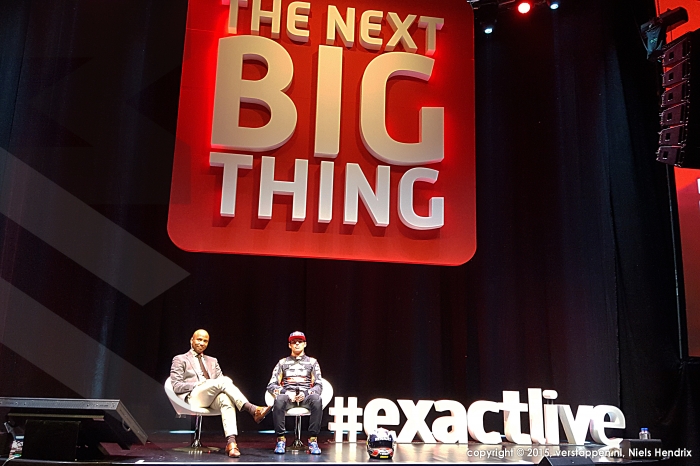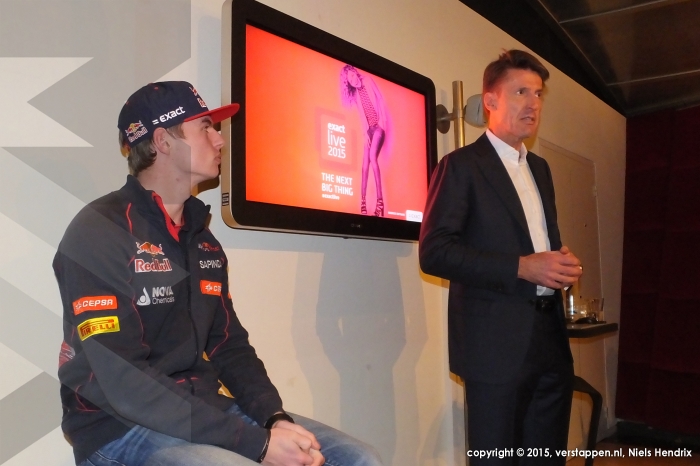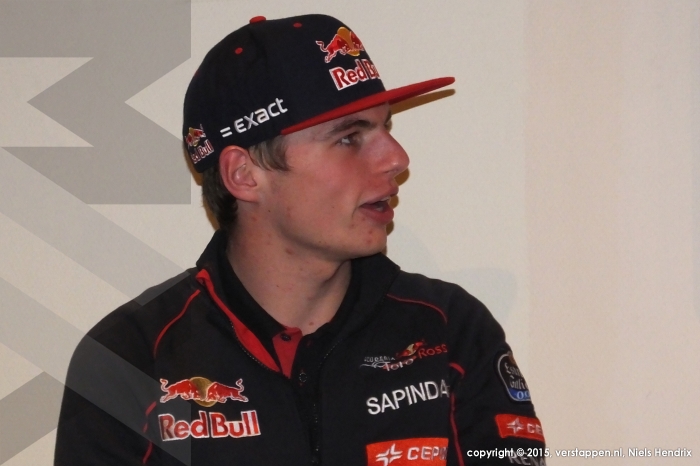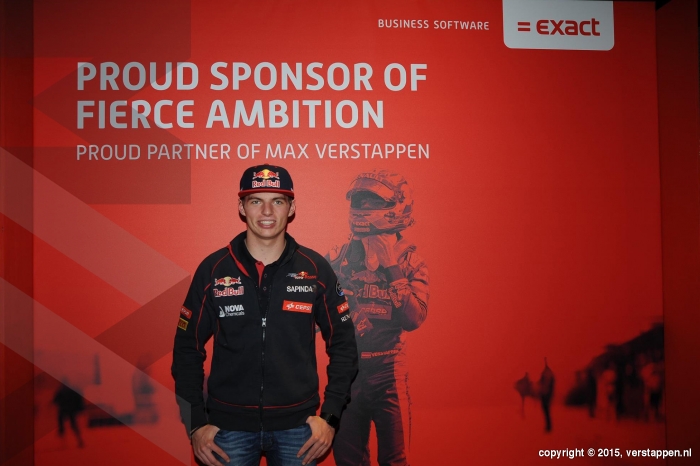Max teaches about racing in a ‘masterclass’
Published on 05 January 2016 by Mike Motilall
‘The next big thing’ was what it was about mid-October during Exact live, the biggest business software event in the Netherlands. Besides the speeches from big names on the podium, there were also workshops and training sessions at the jaarbeurs in Utrecht. Max Verstappen did not only speak in front of a packed auditorium, but he also treated some lucky few to a ‘masterclass’.
After having seen a compilation of his own overtakes in 2015, Max elaborates on this: “It is a feeling, an instinct. You just go for it. When an overtake succeeds, you are happy for a moment and think ‘that was a good one’ and then you just go on.” Is it difficult to get out of a slipstream? “When you are close to someone, there is turbulent air. You want to keep away from that dirty air. You are trying to find the grip to have a good exit out of the corner in order to attack. Before you actually do the overtake, you have already been preparing this some corners before.”
 In China, Max overtook Marcus Ericsson’s Sauber on the long straight without even locking up his tyres. How did you manage to pull that off, is the question posed to the Dutch Formula 1-driver. “Beforehand, I had shifted my brake balance more to the rear, so I could brake harder. Then it’s just a matter of sensing that you are right on the limit. Meanwhile, I had to use my batteries as well, because we lacked top speed. With one hand you are adjusting the button for the brake balance and after the overtake, the settings for the batteries again to save energy. So in effect, you are negotiating the turn with just one hand, even to that you get used to.”
In China, Max overtook Marcus Ericsson’s Sauber on the long straight without even locking up his tyres. How did you manage to pull that off, is the question posed to the Dutch Formula 1-driver. “Beforehand, I had shifted my brake balance more to the rear, so I could brake harder. Then it’s just a matter of sensing that you are right on the limit. Meanwhile, I had to use my batteries as well, because we lacked top speed. With one hand you are adjusting the button for the brake balance and after the overtake, the settings for the batteries again to save energy. So in effect, you are negotiating the turn with just one hand, even to that you get used to.”
In the high-tech world of the Formula 1, massive amounts of data is being collected and analysed, do you have a look at that yourself? “Yes, I read a lot of data myself. I have my own laptop with everything on it also. On the car there are about some 1500 sensors, that all generate data. If I were to put it all on my screen, I would be at a loss. So I mainly check my cornering speed, my brake pressure, how I am on the throttle, how much the tyres are locking up and the energy used when I am on the throttle. I am always very busy with that.”
Max continues: “In the end, it’s all about details, most of all in Formula 1, because all the drivers are talented. It’s the small things that give you one or two hundredths in a corner that can make the difference in a lap time.”
 In an F1-car there are two pedals: the brake and throttle. The clutch is on the steering wheel and is operated with two paddles, so you can use it to exit the pits left or right. Max also teaches us in the use of the clutch during a start: “During a start you use both paddles of the clutch. You can release the clutch to sense the moment when it is about to slip. At a start, you squeeze one paddle all the way in and you put the other one in the position where you felt it was about to slip. When it’s go time, you release the first paddle and at the right moment it will engage. Of course, there is a little bit more to it, with also two other buttons on the steering wheel, but that’s how you normally do a good start.”
In an F1-car there are two pedals: the brake and throttle. The clutch is on the steering wheel and is operated with two paddles, so you can use it to exit the pits left or right. Max also teaches us in the use of the clutch during a start: “During a start you use both paddles of the clutch. You can release the clutch to sense the moment when it is about to slip. At a start, you squeeze one paddle all the way in and you put the other one in the position where you felt it was about to slip. When it’s go time, you release the first paddle and at the right moment it will engage. Of course, there is a little bit more to it, with also two other buttons on the steering wheel, but that’s how you normally do a good start.”
Formula 1-teams are made up of hundreds of employees, and with a part of them present at all Grand Prix. At the circuit, there are about some 30 to 40 engineers, divided over two cars. “Within the team, I intensively work with my own crew. After training sessions, we have meetings that can last from an hour to an hour and a half. I normally eat during such a meeting instead of visiting the team’s hospitality. We are always busy to optimize the complete package. It is not only about what I ask of them, but the other way round also. Like if I, in a particular corner, can get off of the brakes a bit sooner, so the car rolls more into it. That’s how we always try to gain time.”
 And how is that when you are testing in the Red Bull simulator in England? “There, six to ten engineers are present, they are constantly monitoring and preparing set ups. It is key to be able to get along with all of these people and to communicate clearly. It is working relation, but apart from that you also need to be able to get along together. Going out for dinner and having fun with each other is also a part of that.”
And how is that when you are testing in the Red Bull simulator in England? “There, six to ten engineers are present, they are constantly monitoring and preparing set ups. It is key to be able to get along with all of these people and to communicate clearly. It is working relation, but apart from that you also need to be able to get along together. Going out for dinner and having fun with each other is also a part of that.”



